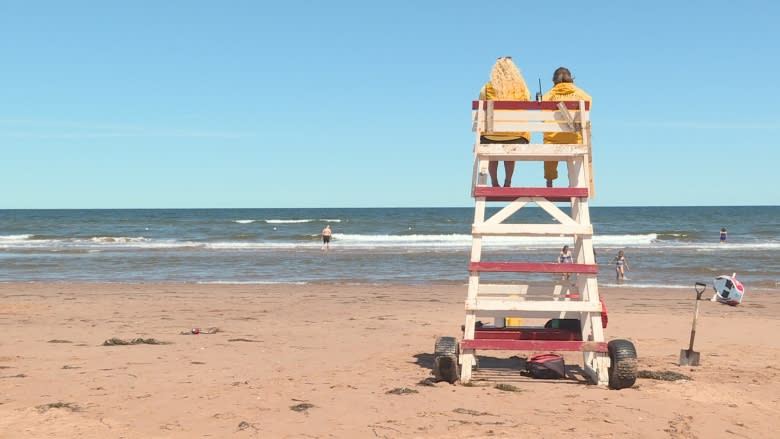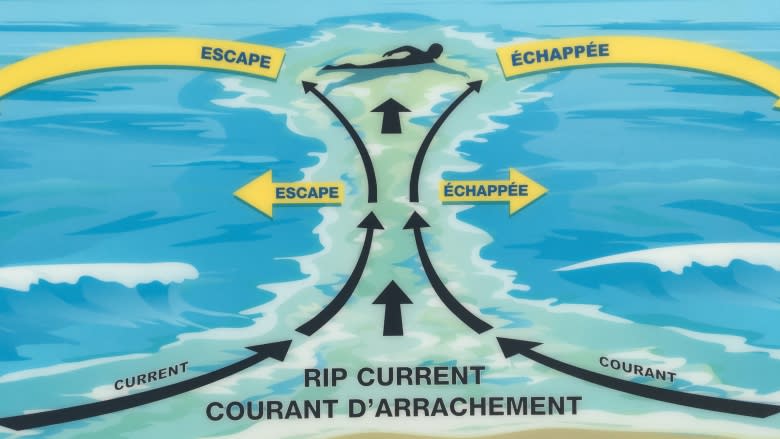Avoiding the dangers of rip currents: Surf guard supervisor shares her tips
After a weekend where rip currents along P.E.I.'s north shore led to one man's death, and some close calls for others, one professional surf guard is sharing her tips on how to avoid future tragedies.
"It's awful when you hear things like this happening," said Kiara Clory, a surf guard supervisor in P.E.I. National Park. "It just speaks to the need for public awareness. That's crucial."
1. Watch the waves
Clory said it all starts with knowing when it's safe to swim, and when the water should be avoided.
Clory and her fellow surf guards closely monitor surf conditions in the national park, and let beach goers know when there's a risk of being pulled out by a rip current.
But, what about all those Islanders and visitors heading to unsupervised beaches? How can they decide whether it's safe to swim?
Clory said to keep an eye on the waves.
"Any day that there are bigger waves where you can see the white caps, there's probably going to be rip currents out there. So what we'd recommend is that you stay in shallow areas...And if you really aren't a confident swimmer, either don't swim at all, or come to a supervised beach and we can keep an eye on you and let you know where the safer areas are."
2. Check conditions online
Even if you're determined to avoid the crowds and hit an unsupervised beach, Clory says it's still smart to monitor the surf conditions at nearby national or provincial park beaches, and use them as a guide.
Both Parks Canada and P.E.I.'s tourism department update those conditions on their websites.
Clory said "moderate" conditions means swimmers should stay in shallow waters, while "dangerous" means stay out of the water all together.
And never assume every beach is alike.
"One beach on the north shore may not be as bad depending on where the winds going. So unfortunately this weekend, up east was worse because of how the wind was going, and then at North Rustico Beach, it wasn't bad at all," explained Clory. "So it just depends beach to beach. And that's why we have different surf conditions at each beach."
3. Don't panic
But, what to do if a rip current does pull you out to sea? Clory said the most important thing is to stay calm, and avoid trying to swim toward shore.
"Strong days you can't swim against [the rip current], even if you're an Olympic swimmer," said Clory. "But the problem is, when someone gets in a rip current, and they feel, "oh my god, oh my god, I'm going out,' they kind of panic. Their first reaction is to swim straight in. So then you start swallowing water, and tiring out. And that's where the danger is."
4. Swim out of the current
Clory said instead of swimming against the current, you should swim out of it — that is, parallel to the shore. Look left or right for crashing waves and swim toward those.
"We like to say to people, 'crashing waves are your friend.' So wherever you see the white water is where the sandbars are, so it's not ripping in those areas," said Clory. "And if you can make your way to the crashing waves, they're going to help you get back in."
- MORE P.E.I. NEWS | Wild weekend weather causes extensive damage in Eastern P.E.I.
- MORE P.E.I. NEWS | Chemical leak closes Garfield Street




